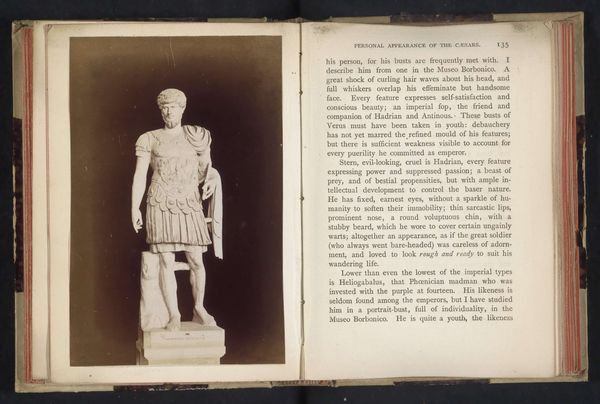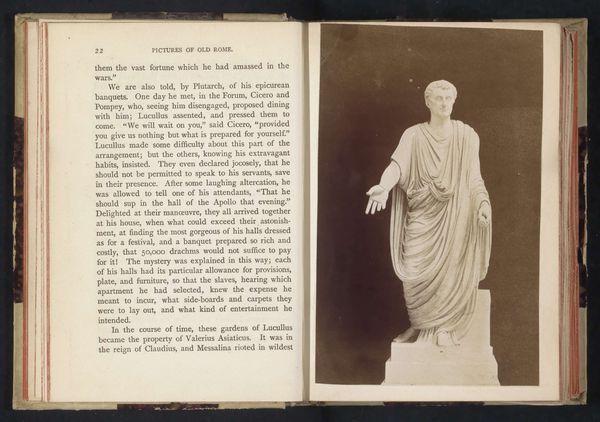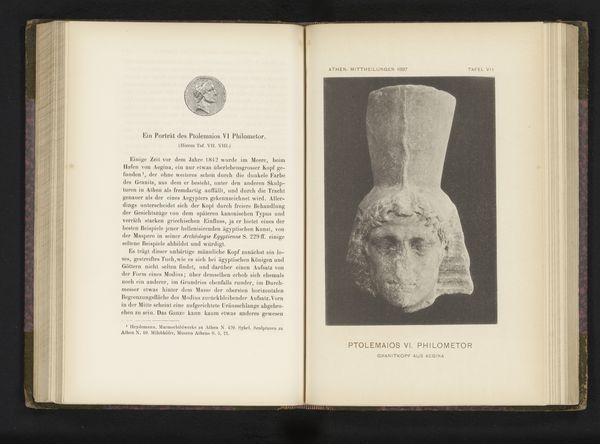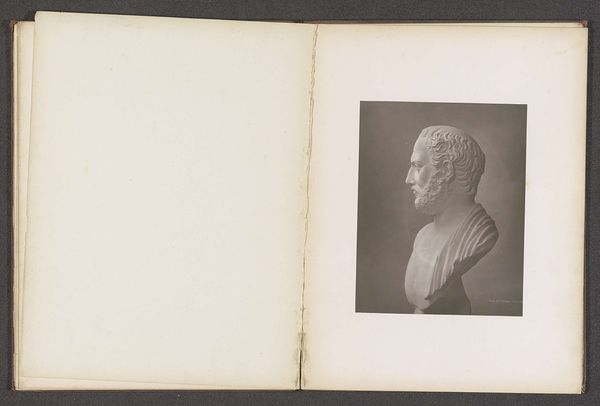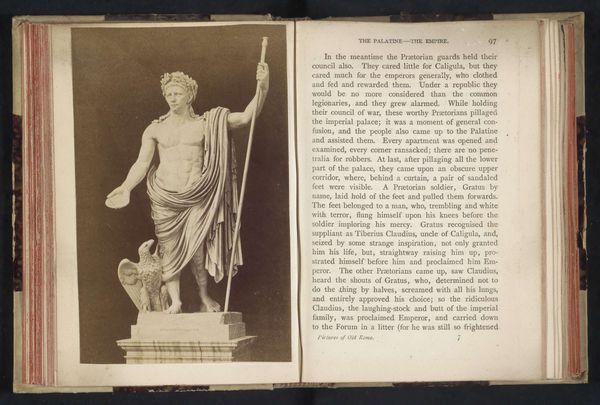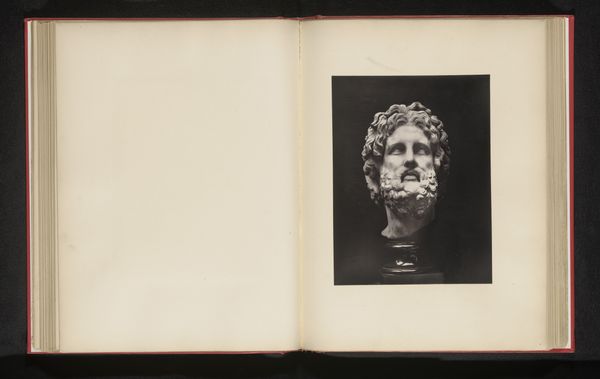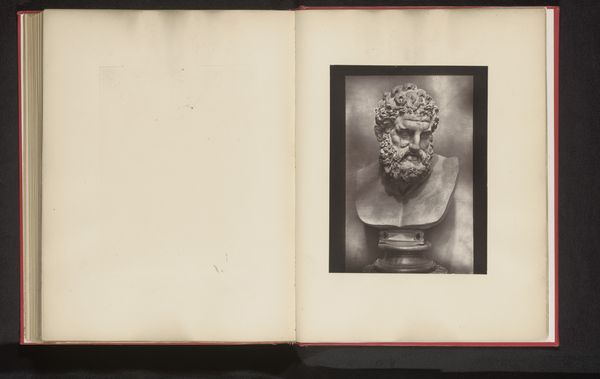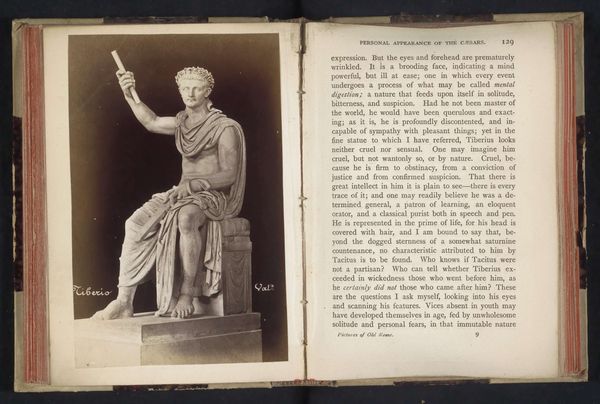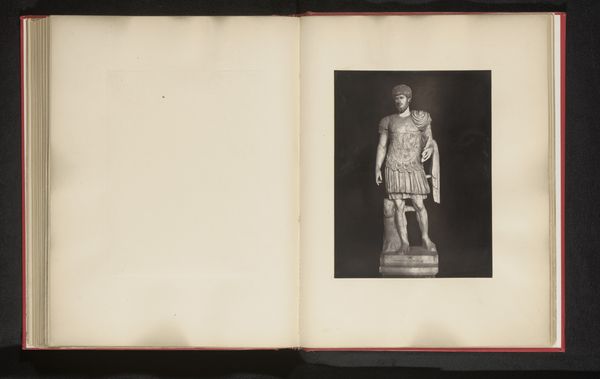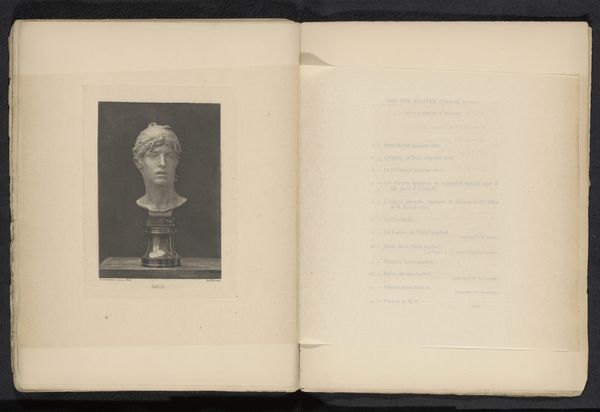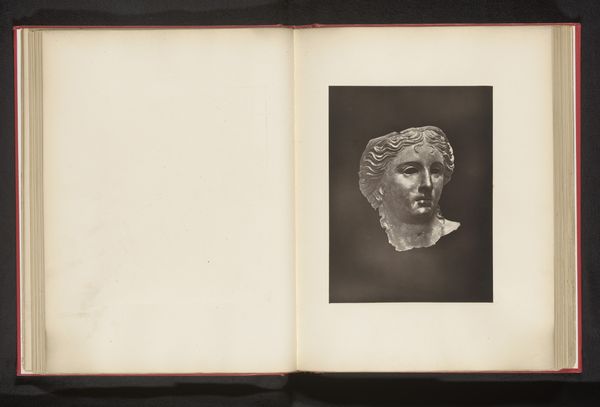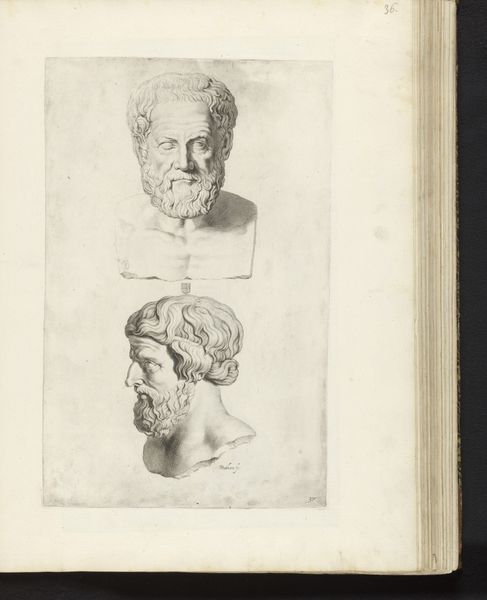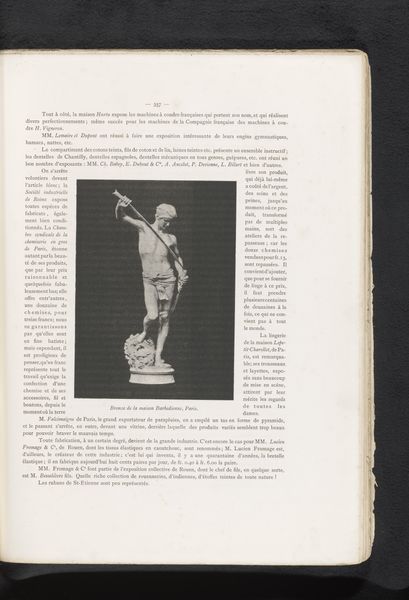
print, photography, sculpture
#
portrait
# print
#
photography
#
romanesque
#
ancient-mediterranean
#
sculpture
#
history-painting
Dimensions: height 145 mm, width 90 mm
Copyright: Rijks Museum: Open Domain
Curator: Here in the Rijksmuseum, we're looking at an image dating from before 1882, cataloged as "Sculptuur van het hoofd van keizer Nero te Rome" – a photograph, a print really, capturing a sculpture of Emperor Nero's head. Editor: It looks strangely...staged? Almost like a prop head waiting for its cue in a school play about ancient Rome. It’s striking, though; a study in the detached gaze. There's a sort of theatrical severity about it. Curator: I think that's partly due to the photographic style of the time, wouldn't you say? It also frames important discussions around representation of power. Think about Nero's image throughout history: How has it been shaped and reshaped? This portrait engages directly with those shifting narratives of leadership, excess, and tyranny. Editor: Absolutely, history loves a villain—it makes for better stories, right? And to have this stone-cold rendering, amidst the layers of interpretation… well, it’s pretty captivating. There’s something unsettling in the smoothness of the marble too; as if attempting to smooth away history's sharper edges. It also reminds you how even a cruel personage had admirers... the portrait must have served somebody at one point in time. Curator: Exactly. And if we consider portraiture itself, the Roman ideal was about projecting authority. It also opens conversations on gender roles. Historians have talked about how Nero challenged those ideals; and how even images of him served in a way to undermine what power meant in Rome. What happens when someone attempts to be both adored and feared, as an individual but also the center of an empire? Editor: Right. So, this photograph prompts us to reexamine more than just Nero's face, doesn't it? It forces a question... What exactly are we choosing to immortalize? What qualities of leadership do we champion or condemn? Curator: It is about power, the construction of identity, and how we choose to engage with those difficult historical narratives. Editor: Precisely. Maybe after all it does not teach us something new, but makes us remember an eternal aspect of society... Curator: Yes. It provides layers that demand more complex readings of an often very simplified account of historical figures and moments.
Comments
No comments
Be the first to comment and join the conversation on the ultimate creative platform.
